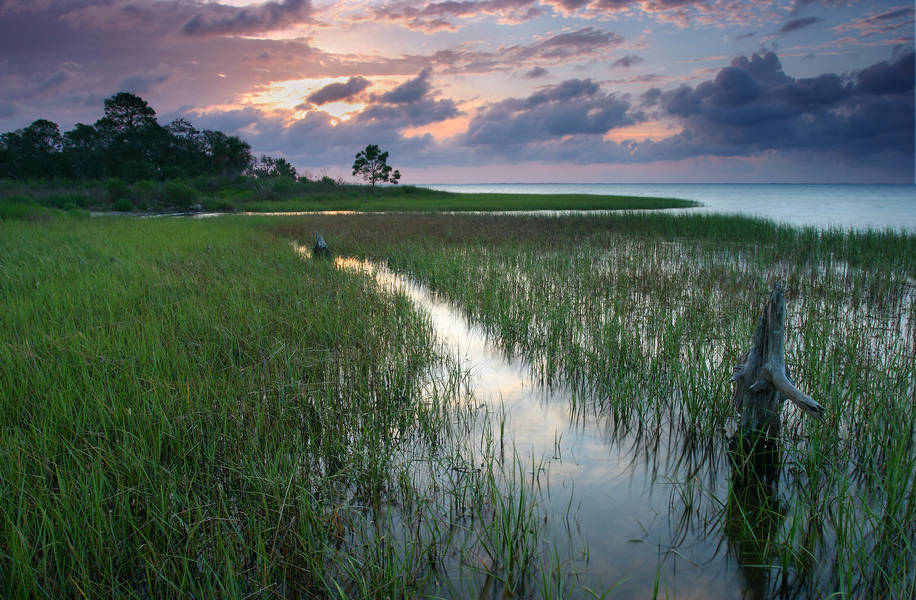Natural Resource Damage Assessment (NRDA) is the legal process authorized under the Oil Pollution Act that authorizes certain federal agencies, states and tribes to evaluate the impacts of oil spills on natural resources. After the Deepwater Horizon oil spill, federal and state agencies came together to form the Deepwater Horizon Natural Resource Damage Assessment Trustee Council (Trustee). As co-trustees for the state of Florida, DEP and the Florida Fish and Wildlife Conservation Commission have played key roles in the Deepwater Horizon NRDA process.
Early Restoration Projects
On April 20, 2011, BP agreed to provide funds to begin early restoration planning and implementation. Early restoration efforts have occurred throughout the Gulf states and are facilitated by the Trustees.
Phase l and ll
The first two sets of projects in Florida put forth by the Trustees, totaling nearly $12 million, included dune restoration, boat ramp enhancements, and bird and sea turtle nesting habitat projects.
Phase lll
On October 3, 2014, the Final Phase III Early Restoration Plan and Programmatic Environmental Impact Statement was announced by the Trustees. There are 30 Florida projects totaling $105 million included in the plan, two of which are Department of Interior projects at Gulf Island National Seashore in Escambia County.
Phase IV
The Trustees selected and approved 10 early restoration projects across the Gulf Coast for Phase IV. The projects have a combined estimated cost of $134 million and will benefit sea turtles, birds and fish; increase recreational opportunities; and improve nearshore and reef habitats. The Department of Interior has a seagrass restoration project in Florida at the Gulf Island National Seashore in Escambia County. Neither Florida Fish and Wildlife Conservation Commission nor DEP have any projects funded through Phase IV.
Phase V
Phase V, called the Florida Coastal Access Project, is the final phase of the early restoration projects. The first phase of the Florida Coastal Access Project has an approximate cost of $34.3 million and will enhance public access to natural resources and increase recreational opportunities at four sites in the Florida Panhandle.
Infrastructure will be constructed at each of the sites to facilitate and enhance recreational use. This will include pathways, boardwalks and docks with kayak launches, trails and picnic areas, and other improvements. The project also will provide ecological benefits by removing invasive species and protecting important habitats.
The second phase of the Florida Coastal Access Project includes acquisition and construction of public park amenities at a cost of over $4.5 million and will enhance public access to natural resources and increase recreational opportunities in the Florida Panhandle.
The third and fourth phases of the Florida Coastal Access Project increase coastal access through acquisitions. The public parks and additions were donated to the respective local governments, except for Phase V.4 which was donated to the St. Marks National Wildlife Refuge.
The respective local governments for the Phase V.1 and Phase V.2 parks were provided with operation and maintenance funds to maintain for 10 years. Phase V.3 and V.4 were land acquisitions with limited amenities, therefore no funds were allocated for operations and maintenance.
Final Restoration Projects
The final restoration phase began on April 4, 2016, with the court’s approval and entry of the consent decree between BP, the United States and the five Gulf Coast states. The Trustees have approved standard operating procedures for the long-term management, implementation and administration of settlement funds for natural resource restoration. They also will coordinate as part of trustee implementation groups for defined Restoration Areas.
Work in the Florida Restoration Area will focus on restoring water quality and habitat; replenishing and protecting wildlife populations like sea turtles, marine mammals, birds and oysters; providing and enhancing recreational opportunities; and restoring habitats on federal lands.
The Florida Trustee Implementation Group will develop project-specific restoration plans consistent with the resource allocations laid out in the Final Programmatic Damage Assessment and Restoration Plan (PDARP) and Final Programmatic Environmental Impact Statement (PEIS). As part of the restoration planning process, the public can submit project ideas, and review and comment on any proposed project-specific restoration plans for the Florida Restoration Area. Once project-specific restoration plans are approved, implementation and monitoring of the selected projects will begin.
Restoration Project Data
The Trustees are committed to providing annual reports to the public to show restoration progress and how settlement funds are allocated and spent. Project reports can be found on each restoration area page. Project reports provide detailed project information including descriptions, maps, activities, and dashboards with financial and environmental compliance information.
Advanced data exploration tools are provided in the Data Integration Visualization Exploration and Reporting Portal, or DIVER. DIVER can be used to search, map and download data on all restoration projects and related activities. DIVER query results provide data tables, summary dashboards, metadata, and direct links to the detailed project reports.


